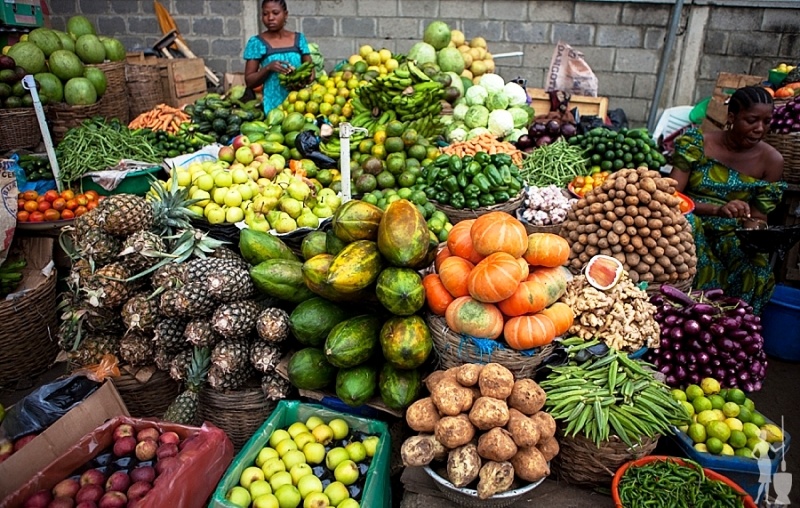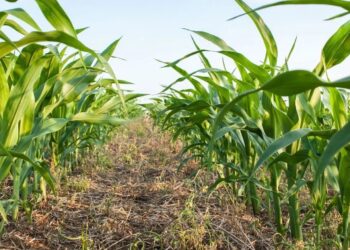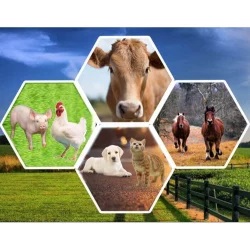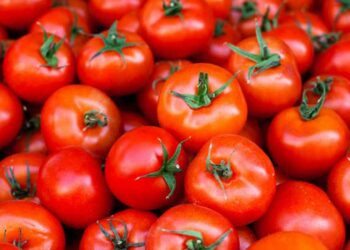Nigeria’s agriculture sector posted signs of steady recovery in 2025, with improved yields across major staples and a rare decline in food prices. Yet, behind the positive numbers, the 2025 Agricultural Performance Survey (APS) has exposed some fragility of the food systems strained by climate shocks, high input costs and gaps in mechanisation.
The National Agricultural Extension and Research Liaison Services (NAERLS) at Ahmadu Bello University, Zaria, released the survey in Abuja, presenting what it described as the most comprehensive review of the wet-season farming year.
Conducted across all 36 states and the Federal Capital Territory between August 30 and September 7, the study involved 22 ministries, departments, agencies, and farmers’ associations.
According to the executive director of NAERLS, Professor Yusuf Sani, the findings showed sustained growth driven by favourable rainfall, improved agronomic practices and modest expansion of cultivated land.
He said the results confirmed that Nigerian farmers have remained resilient despite unpredictable weather and rising costs.
“The 2025 survey reaffirms the resilience of Nigerian farmers and the growing impact of research and extension collaboration nationwide, we must now consolidate these gains by scaling up climate-smart farming practices and ensuring that inputs reach farmers at affordable rates,” Professor Sani said.
The report recorded increases across nearly all major crops. National rice output grew from 9.1 million metric tonnes in 2024 to 9.4 million metric tonnes in 2025, while maize rose by 2 percent to 11.4 million metric tonnes. Sorghum, cowpea, cassava, and yam also recorded gains between 1 and 5 per cent. Groundnut production rose by 3.1 per cent despite reduced land area.
The most striking outcome was the fall in staple food prices. Between July 2024 and July 2025, the average price of white maize dropped by 52.5 per cent, milled rice by 34.6 per cent, sorghum by 50.2 per cent, and cowpea by 45.2 per cent.
NAERLS attributed this decline to improved food availability and wider market distribution.
However, beneath the optimism were troubling signals. Fertiliser prices surged by nearly 20 per cent, while floods and prolonged dry spells wiped out more than 19,000 hectares of farmland nationwide.
The report estimated yield losses of about 22.5 per cent due to pest and disease attacks. Production costs for major crops also rose compared to 2024, underscoring the continued vulnerability of smallholder farmers.
At the presentation of the report, the minister of agriculture and food security, Abubakar Kyari, described the survey as a vital tool for evidence-based planning.
He said the government was committed to using its findings to strengthen policies and improve farmer welfare.
“This survey remains one of the most essential instruments for evidence-based planning, monitoring, and policy direction in Nigeria’s agricultural sector.
It provides us with a realistic picture of production outcomes, farmer experiences, and sectoral constraints upon which informed decisions and targeted interventions can be built”, the minister said.
Kyari highlighted that the 2025 edition of the APS set new standards in transparency and collaboration, integrating datasets from the newly introduced Farm Family Census and Tractor Census.
He noted that while production gains were encouraging, several systemic weaknesses must be addressed urgently.
“The report confirms steady growth in production of major staples such as rice, maize, sorghum, millet, cowpea, yam, and cassava. This progress, coupled with the significant drop in food prices, reflects the impact of our interventions in input support, extension delivery, and mechanisation,” Kyari said.
“However, the report also highlights persistent challenges. Rising input costs, particularly for fertiliser and fuel, continue to limit productivity among smallholder farmers. Mechanisation coverage remains uneven, and post-harvest losses, especially in the southwest and north-central zones, pose serious threats to food availability and farmer incomes.”
The minister announced that the government would expand the Presidential Fertiliser Initiative and intensify local fertiliser production to make the commodity more affordable. He also confirmed that N250 billion has been allocated as smallholder credit to improve access to finance.
Kyari said the ministry intends to institutionalise a Dry Season Agricultural Performance Survey to complement the wet-season assessment, making agricultural planning a year-round exercise.
“We will strengthen extension systems by recruiting and equipping more agents, leveraging digital tools to reach more farmers, and promoting youth and women’s inclusion through affordable labour-saving technologies,” he stated.
Beyond crop production, the survey exposed lapses in the livestock and fisheries subsectors, with disease outbreaks reported in parts of the country. The minister said this underscored the need for “stronger animal health systems, aquaculture development, and adaptive measures to respond to climate variability.”
The 2025 APS, though largely positive, revealed deep structural issues in Nigeria’s food systems, particularly in the areas of mechanisation and post-harvest management. Experts at the presentation described these weaknesses as longstanding but correctable through sustained coordination between the federal and state governments.
In his remarks, Professor Aliyu Sanusi Rafindadi, Deputy Vice-Chancellor (Advancement, Research and Innovation) of Ahmadu Bello University, said the APS had become a reliable instrument for tracking the state of agriculture in Nigeria.
“This annual survey represents one of the most reliable and long-standing mechanisms for assessing the state of Nigeria’s agricultural sector,” Rafindadi said. “It provides timely and evidence-based insights on crop performance, input use, livestock production, extension delivery, and the overall outlook of our food system.”
He added that the 2025 report offered a “sobering yet instructive picture” of the sector’s performance, reflecting both the endurance and the struggles of farmers under changing climate and market conditions.





